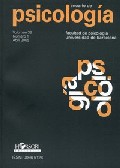How we experience immersive virtual environments: the concept of presence and its measurement
Article Sidebar

Main Article Content
Mel Slater
Beau Lotto
Maria Marta Arnold
Maria V. Sanchez-Vives
This paper reviews the concept of presence in immersive virtual environments, the sense of being there signalled by people acting and responding realistically to virtual situations and events. We argue that presence is a unique phenomenon that must be distinguished from the degree of engagement, involvement in the portrayed environment. We argue that there are three necessary conditions for presence: the (a) consistent low latency sensorimotor loop between sensory data and proprioception; (b) statistical plausibility: images must be statistically plausible in relation to the probability distribution of images over natural scenes. A constraint on this plausibility is the level of immersion; (c) behaviour-response correlations: Presence may be enhanced and maintained over time by appropriate correlations between the state and behaviour of participants and responses within the environment, correlations that show appropriate responses to the activity of the participants. We conclude with a discussion of methods for assessing whether presence occurs, and in particular recommend the approach of comparison with ground truth and give some examples of this.
Article Details
Com citar
Slater, Mel et al. “How we experience immersive virtual environments: the concept of presence and its measurement”. Anuario de psicología / The UB Journal of psychology, vol.VOL 40, no. 2, pp. 193-10, https://raco.cat/index.php/AnuarioPsicologia/article/view/143105.
Drets
Drets d'autor
Authors transfer to the publisher all copyright for the full term of protection and for all the world.
The authors can post a copy of their articles in accordance with the policy of free access to the journal.